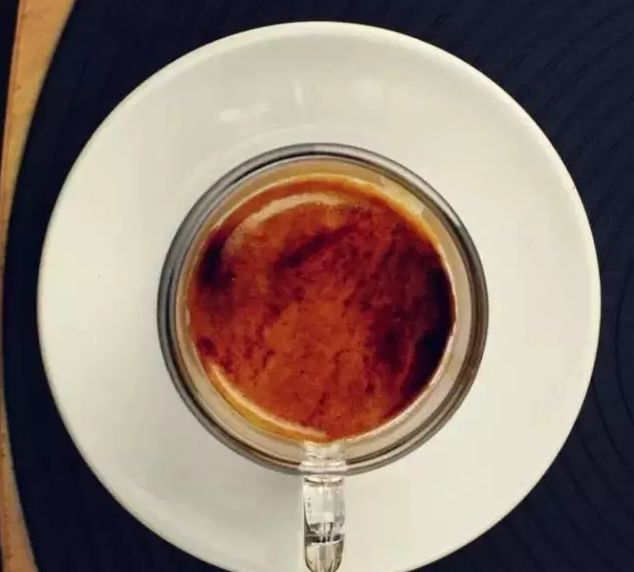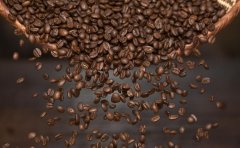Why does coffee smell so good? How many aromas of coffee? How did it come about?

Professional coffee knowledge exchange more coffee bean information please follow the coffee workshop (Wechat official account cafe_style)
What is the meaning of wet and dry aroma of coffee? seven factors affecting the flavor and aroma of raw beans of coffee
A few days before Napoleon died on St. Helena Island in 1821, his attendant Marshal Bertrand wrote about Napoleon begging: "he asked for twenty times in the morning and asked me if I could give him some more coffee." No, my lord, the doctor ordered only one spoonful of coffee. It's not time yet. You have a bad stomach. Drinking early will only vomit early.' He has vomited nine times this morning. In the past, he was all-powerful and led an army, and he was a hero everyone feared, but now he has been reduced to begging for coffee and obedient like a child. Begging again and again, being rejected again and again, but not angry. The situation and the scene are sour. "
In addition to caffeine, the charming aroma of coffee is also the main reason why Napoleon, me and many coffee fans miss coffee all the time. But why on earth does the coffee smell so good? The most important thing, of course, is that coffee beans themselves store a variety of raw materials, such as carbohydrates, proteins, lipids, organic acids and so on. After heating and baking, it will start a series of complex reactions, creating an attractive aroma.
The two most important reactions are caramelization (caramelization, oxidation and browning of sugars) and Mena (Maillard reaction, reaction of amino acids with sugars). Both reactions require the participation of sugars, and the rich sucrose in raw beans provides the materials needed for these two reactions. Previous studies also found that there was a positive correlation between sucrose content and coffee bean flavor. From the table below, it can be seen that the content of sucrose (Sucrose) in Arabica is twice as much as that in Robusta, which also explains why the flavor of Arabica coffee beans is better than that of Robsta.
(1) caramelization reaction
Once I ordered a cup of Guatemala-Huehuetenango near the Kaohsiung Cultural Center and spent a beautiful afternoon with "my Life of Adventure" (My Life As An Explorer by Sven Hedin). After drinking coffee, I accidentally found that the dry coffee stains at the bottom of the cup were arranged into interesting patterns, so I picked it up to see if I could see the jackpot number of the next big lottery, but I didn't see it for a while.
In 15, I thought the patterns were more like an explorer marching among the rolling brown sand dunes in the desert. All of a sudden, the sweet smell of caramel flashed for a moment, and then smell it carefully, the sweet smell of caramel came from the bottom of the cup. Isn't the tiny Nanguo I ordered black coffee? Why is there the sweet smell of caramel? Later, I found that the black coffee itself is really sweet, especially the sweetness of caramel! But the sweetness of each kind of coffee varies depending on the variety of beans and the way it is roasted.
The sugar in coffee beans is caramelized at about 170 ℃, which is exactly the melting point of sucrose (185 ℃) and the temperature of the explosion stage when coffee beans are roasted. The product of caramelization is divided into two parts:
The dehydration product of sugar is caramel or sauce.
The pyrolysis products are mainly volatile aldehydes and ketones.
Generally speaking, fire-roasted aroma, caramel and color are produced in the caramelization reaction, as well as other aromatic substances such as maltol, Cyclotene, furan and so on. These compounds can also be found in red wine, fruit juices, cream and other foods.
However, if caramel is too much in the baking process is not a good thing, but will cause carbonization, making the coffee dry and choking. If the caramel is not enough, it will make the aroma monotonous and lack of layers.
(II) Mena reaction
Recently, more and more coffee shops set up a baking machine in front of the store to bake by themselves, so that they can not only save costs but also control their own quality. So walking on the street, you can often smell the unique aroma of roasted coffee beans, including the burning blue smoke smell of plant fibers, the sweet smell of cream, the brown smell of toast, and so on. Most of these rich flavors come from the Mena reaction during baking.
The Mena reaction can be divided into three stages.
First, at the initial stage:
Carbonylamine condensation Amadori molecular rearrangement
Second, in the medium term:
Amadori molecular rearrangement product fructosamine is dehydrated to HMF (hydroxymethylfurfural)
Deamination of fructosamine to reducing ketone
Interaction of Amino acids with dicarbonyl compounds
Third, at the end of the year:
Aldol condensation
Polymerization of melanin
In addition to sugars, proteins also account for about 11% of the weight of raw beans, and the amino acids contained in these proteins are exactly the raw materials needed in the Mena reaction. Mena reaction refers to the amino acids and reducing sugars (glucose, fructose, lactose, etc.) in food. ) A series of reactions in the heating process. Mena reaction produces a variety of aromatic substances and pigments such as Pyridines, Pyrazines, Oxazoles, Thiazoles, Pyrroles. The Mena reaction plays an important role in the flavor of food cooking, whether it is the blackening and fragrance of the sausage when baking sausages, the soft roast chicken on the outside and the delicious baked bread. Mena reaction is responsible for the complete color, smell and flavor of these barbecue foods.
Coffee is blessed with a wide variety of complex chemicals, in addition to the above-mentioned compounds, there are other organic acids, inorganic acids, plant bases and so on. Not only sweet and beautiful ingredients, some slightly bitter compounds make coffee flavor have a wider level and change, together to create a unique rich taste of coffee.
Reference:
Coffee Flavor Chemistry by Ivon Flament
What Makes that coffee smell so good? By Parliament, T. From CHEMTEC.
Han Huaizong (2008). "Coffee". Taipei: time-Zhou culture.
.
Important Notice :
前街咖啡 FrontStreet Coffee has moved to new addredd:
FrontStreet Coffee Address: 315,Donghua East Road,GuangZhou
Tel:020 38364473
- Prev

Why is the aroma of Starbucks coffee so strong? Is there any coffee flavor added?
Professional coffee knowledge exchange more coffee bean information Please pay attention to the coffee workshop (official account Wechat cafe_style) what is the meaning of the wet and dry aroma of coffee the seven factors that affect the flavor and aroma of coffee raw beans sometimes pass through the outside of Starbucks or inside the department store, why is the aroma of their coffee so strong when it is still a long way to eat inside the department store? Of course.
- Next

What are the seven factors that affect the aroma of coffee?
Professional coffee knowledge exchange more coffee bean information Please pay attention to the coffee workshop (Wechat official account cafe_style) what is the meaning of wet and dry coffee the seven factors that affect the flavor and aroma of coffee raw beans a cup of good coffee, 60% depends on the quality of raw beans. As a coffee practitioner, we should let go of the situation and learn as much as possible about the whole link of From Seed To Cup. this
Related
- Beginners will see the "Coffee pull flower" guide!
- What is the difference between ice blog purified milk and ordinary milk coffee?
- Why is the Philippines the largest producer of crops in Liberia?
- For coffee extraction, should the fine powder be retained?
- How does extracted espresso fill pressed powder? How much strength does it take to press the powder?
- How to make jasmine cold extract coffee? Is the jasmine + latte good?
- Will this little toy really make the coffee taste better? How does Lily Drip affect coffee extraction?
- Will the action of slapping the filter cup also affect coffee extraction?
- What's the difference between powder-to-water ratio and powder-to-liquid ratio?
- What is the Ethiopian local species? What does it have to do with Heirloom native species?

